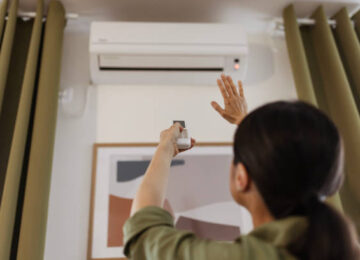Creating the ideal indoor environment involves a lot more than just setting up furniture. Your HVAC system, which stands for Heating, Ventilation, and Air Conditioning, is the backbone of comfort in your home. From managing the temperature to maintaining air quality, a properly installed HVAC system is crucial. In this HVAC installation guide, we’ll cover the essential components and steps, including the air conditioning, furnace, heat pump, air handler, and thermostat.
When it comes to cooling, the air conditioning unit takes the spotlight. Proper installation of your air conditioning system requires attention to detail. To ensure optimal performance, place the unit in an area with unobstructed airflow. This location selection guarantees efficient cooling while extending the overall lifespan of the system.
Moving on to the colder months, a furnace becomes the star player. Installing a furnace involves more than just finding a spot for it. Proper sizing is key to effectively heat your living spaces. Additionally, safety considerations are paramount. The furnace should be correctly positioned and well-ventilated to prevent any heat buildup that could lead to potential hazards.
For those who seek versatility, a heat pump is a popular choice. It not only cools but also heats your home. When installing a heat pump, environmental factors are essential. A well-insulated and properly sealed installation ensures the heat pump operates optimally, regardless of the weather conditions outside.
The air handler might not be as well-known as the others, but it’s equally important. This component is responsible for distributing conditioned air throughout your home. During installation, the air handler’s placement within the ductwork system is critical. Strategic positioning guarantees that every room receives a consistent flow of air, eliminating any uncomfortable hot or cold spots.
Last but not least, we have the thermostat, a vital control device for your HVAC system. Today, smart thermostats are gaining popularity for their energy-saving capabilities. Installing a thermostat correctly involves more than just attaching it to the wall. For accurate temperature readings and efficient operation, keep the thermostat away from direct sunlight and heat sources. Proper programming ensures the system runs when needed, minimizing energy wastage.
To sum it up, an HVAC installation is a multi-faceted process. The air conditioning, furnace, heat pump, air handler, and thermostat all play unique roles in maintaining a comfortable indoor environment. By meticulously considering placement, sizing, and installation techniques, you’re ensuring that your HVAC system operates seamlessly, keeping your home cozy throughout the year.

![HVAC Essentials Creating the ideal indoor environment involves a lot more than just setting up furniture. Your HVAC system, which stands for Heating, Ventilation, and Air Conditioning, is the backbone of comfort in your home. From managing the temperature to maintaining air quality, a properly installed HVAC system is crucial. In this HVAC installation guide, we’ll cover […]](https://www.camheating.com/wp-content/uploads/2023/03/Rebates-750x420.jpeg)



Leave a Reply